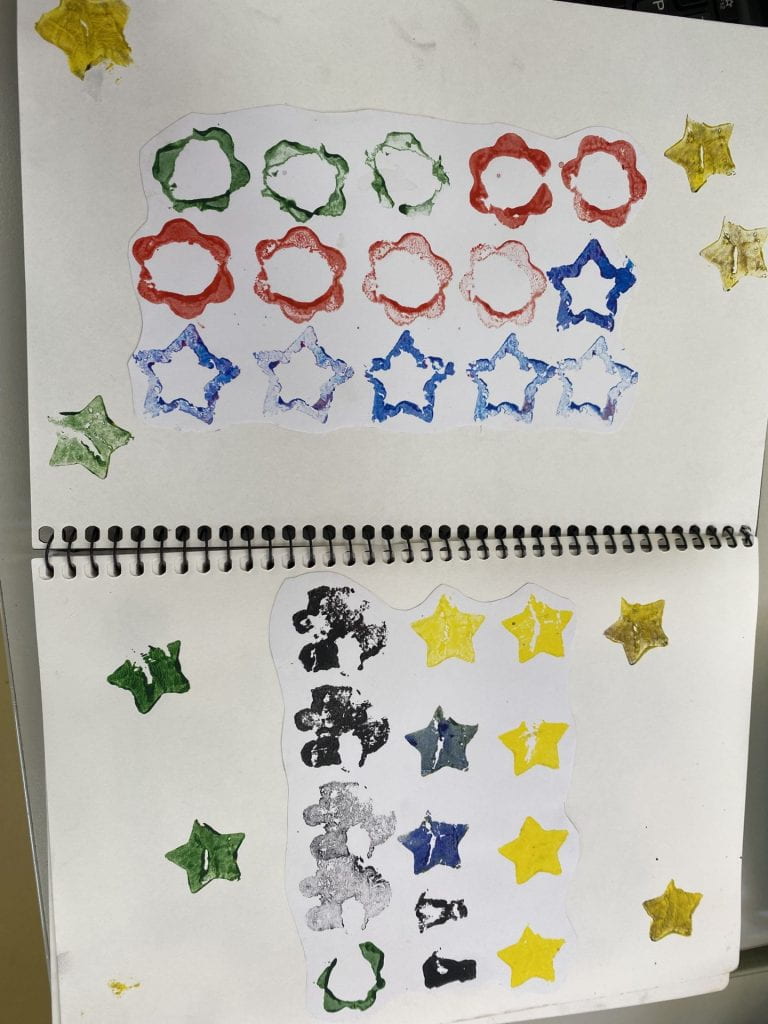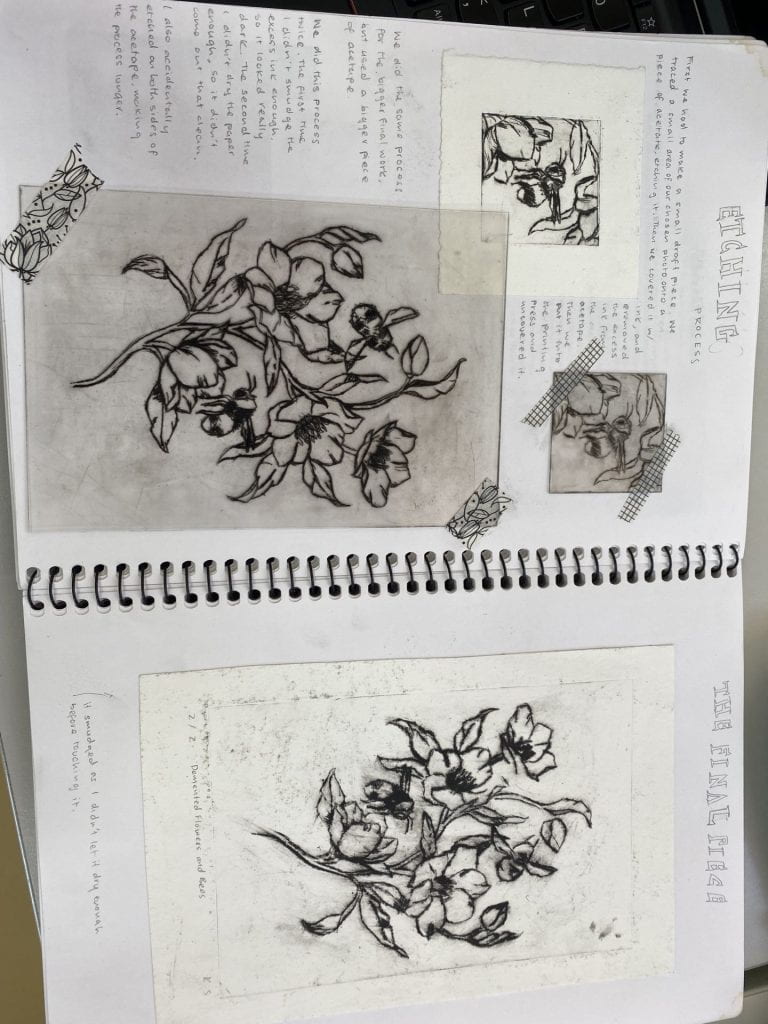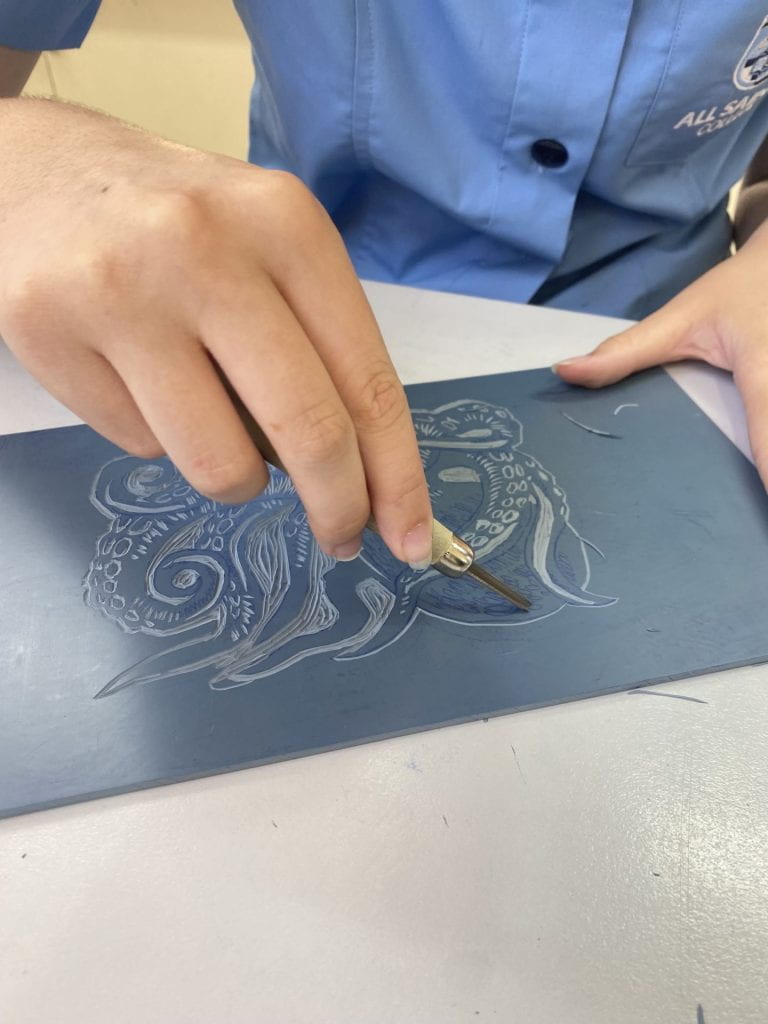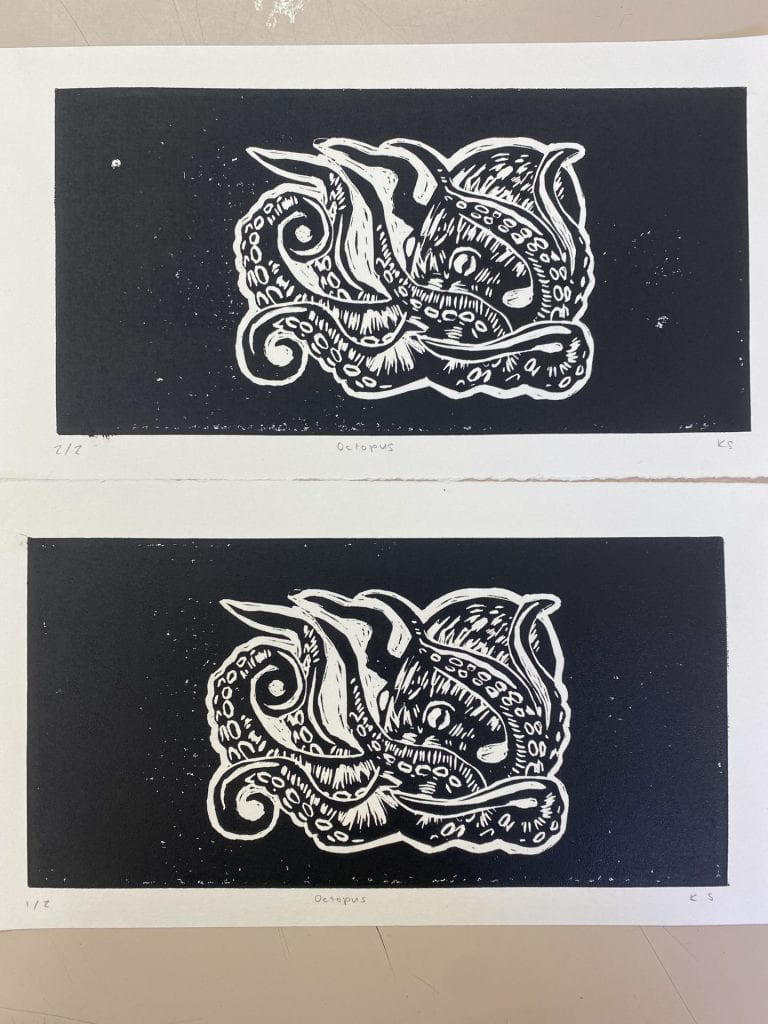Throughout the second semester, we focused on multiple different styles of printmaking, which gave us a new understanding of the many types of printmaking there are.
We first started with potato printing, cutting out shapes in potatoes and painting them, which gave cool, simple designs. Then moved on to frottage prints, a technique in which paper is placed over a rough or unique surface and rubbed with charcoal or pencils. We went around the school and drew over any interesting designs, such as toilet signs, where we then combined all our traces into one large piece. It was an interesting process that gave very fascinating results.



After frottage, we moved on to etching, which was, in my opinion, the hardest process, and also my favourite. Using a sharp object, we carved a design into a piece of acetate. It was important to etch hard into the acetate, or the design would not show up when printing. When printing, we covered the whole acetate with ink, making sure to get the ink into the groves of the design. Then we removed access ink around the design with some old newspaper, which took quite a while. After, we placed our design into the printing press. I had a few troubles throughout the etching process. The first problem I had was I etched both sides by accident, which took up a lot of unnecessary time, and then when printing I didn’t let the paper dry enough, as it had to be wet to print properly, which caused the etching to smudge and not come out clean.
The last process that we’ve been working on for most of term 4 was lino printing, which is a form of block printing that involves carving a design or pattern into a surface, such as rubber, that can then be printed from, acting as a stamp. The process of carving was quite difficult, and it was quite easy to make mistakes, I made a few throughout this term. One of them was I didn’t carve deep enough during my final piece, but after test printing, I made sure to re-carve everything.
Organisation ✰:
My organisation throughout this whole semester was a little all over the place. During term 3, I felt I met all the targets quite quickly, but as I got into term 4 my organisation dropped. I managed to finish the first few prints we did on time, even though my etching was a little rushed.
I also found it hard to choose a design I wanted to do for my final lino print piece, so I found myself looking at inspiration for way too long. I thought I finally had a design I wanted to do, but after printing it out and tracing it onto my final piece, I decided I didn’t want to do it. Eventually, I managed to make it to the deadlines, finding a design I liked, and carving and printing it, but I did leave it quite to the last minute, regrettably.


Inquisitive ✰:
My first ever lino print design was just a test piece, with random drawings, shapes and lines, as I had never done it before. Then the second time I decided to hand draw a design of a fish, which didn’t take too long and came out nicely, in my opinion. The influence for my final lino printing design was from another artist, who I can’t find the name of. I knew I wanted to do something ocean-themed, and after looking for a while I found a piece that I liked of an octopus. I changed a few of the shapes to make it easier and so I could get it done faster.
Problem solving ✰:

I found the lino print process to be more successful in terms of the final results compared to the other elements of printmaking, although I enjoyed the etching process more. With lino printing, I managed to carve my design into the material quite quickly, but I found out in my test piece that the carvings were not deep enough, so I had to re-carve them. I chose to use a different carving tool, as I felt the tool I used to carve was too dull, and the new tool helped me re-carve my designs properly. I also experimented with different carving blades to try to and find which shape was best for different designs.
Creative ✰:
I was happy with most of my final works, although I believe I could’ve done better in etching. The final results of the lino-print were my favourite as they looked the most professional and clean. I made the choice to carve the outline of the tentacles, which originally I didn’t do and I was happy with my decision as I believe it gave a cleaner result.
The whole process of this elective has been very enjoyable, and I’ve learned so much about printmaking I never knew before.

